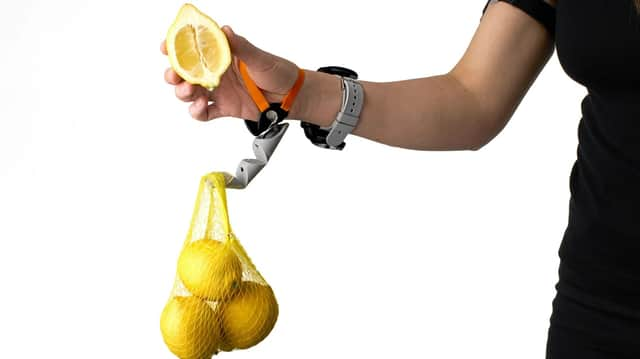Discover how Maymounah Abroudj-Ameur's rise to the World Skate Games is inspiring Bedford's youth, balancing athletics and academics, and boosting roller hockey in Britain.
The Revolutionary Third Thumb
Thumbs up will never be the same again 👍
Introduction of the article
In an era where technological innovations continually push the boundaries of human capabilities, a novel development has captured the imagination of many: the Third Thumb. This groundbreaking prosthetic device aims to augment human dexterity in ways previously confined to the realm of science fiction. Today, we delve into what the Third Thumb is, how it functions, and whether it's genuinely easy to use.

Source : https://www.banburyguardian.co.uk/business/consumer/third-thumb-trial-public-use-explained-4697829
What is the Third Thumb?
The Third Thumb is an advanced robotic prosthesis designed to extend human ability by adding an extra thumb to one's hand. Conceptualised and created by Dani Clode, a graduate from the Royal College of Art, the Third Thumb is more than just a clever gadget; it embodies the potential for prosthetics to not only replace lost functionality but also to enhance and expand existing capabilities.
How Does the Third Thumb Work?
The operation of the Third Thumb is as fascinating as its concept. The device is worn on the side of the hand opposite the natural thumb, effectively giving the user a two-thumbed hand. It is controlled using sensors attached to the user's feet, specifically under the big toes. When the user presses down with their toe, the sensors transmit wireless signals to the thumb mechanism, causing it to move.
This foot-controlled system might sound complex, but it leverages the often-underutilised dexterity of our feet in a seamless manner. The setup includes pressure sensors linked via Bluetooth technology, ensuring that the thumb's movements are both responsive and precise.
Is it Easy to Use?
The million-dollar question for any new technology is its user-friendliness, and the Third Thumb doesn't disappoint. Initial reports and user feedback suggest that while there is a learning curve, the device is intuitive and efficient. With practice, users can perform intricate tasks that benefit from an additional thumb, such as holding multiple objects, playing musical instruments, or even creating art.
Training sessions typically include familiarisation with the foot controls and coordination exercises to refine the interaction between the foot sensors and the thumb. Users have reported that it becomes second nature over time, with many likening the experience to learning a new skill or sport. The adaptability of the human brain is a significant asset here, as neural pathways adjust to incorporate the new limb within the mental map of the body.
The Future of Augmented Dexterity
The success of the Third Thumb opens doors to a future where prosthetics and augmentations are not merely restorative but transformative. This innovation challenges traditional perceptions of human limitation and redefines the possibilities of what we can achieve with technology. As research and development continue, we can expect further refinements and adaptations of such devices, making them accessible to wider audiences and applicable in numerous fields from healthcare to entertainment.
Conclusion
In summation, the Third Thumb stands as a testament to human ingenuity and the relentless pursuit of advancement. While it might initially seem like a whimsical addition, its practical implications are profound, heralding a new age of enhanced human capability. Indeed, with the Third Thumb, thumbs up—and indeed, many other aspects of manual interaction—will never be the same again.
